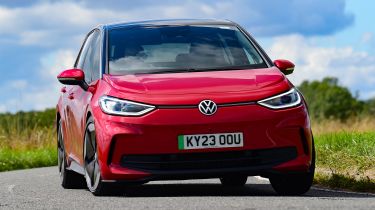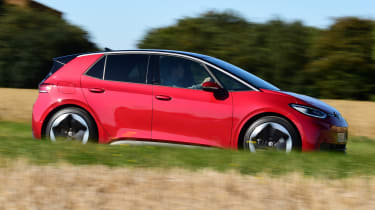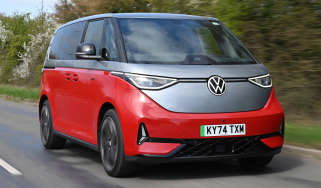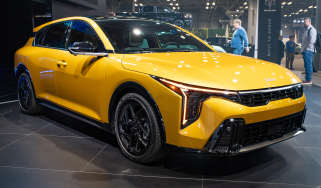Volkswagen ID.3 - Electric motor, drive and performance
The all-electric ID.3 is plenty fast enough for a family hatchback and feels very composed

The ID.3’s best qualities are its composure and refinement, rather than it being especially fun to drive, but that’s not necessarily a bad thing. The ride is on the firm side, but we wouldn’t call the ID.3 uncomfortable – even with our test car’s optional adaptive dampers (available with the Exterior Plus Pack) in their stiffer setting and riding on the 20-inch alloy wheels (also optional on most versions, but standard on Pro S Match). Wind noise is also well muted, and it’s hard to make out the quiet electric motor, which means the ID.3 offers a calm, civilised driving experience at higher speeds.
The instant hit of acceleration from the ID.3’s electric motor also helps around town, where the immediate delivery of torque allows it to move effortlessly through the stop-start traffic. The tight turning circle also makes it easy to park and move around city streets.
The ID.3 weighs around 1,700kg so it doesn’t feel like a hot hatch around the twisty stuff, but there’s a good amount of grip and no excessive body roll or lean. Plus, the steering is direct and consistently weighted, if devoid of any feel.
Surprisingly, for such a premium car, the ID.3 is equipped with drum brakes at the rear. This isn’t a cost-saving exercise, though; the ID.3’s stopping power is mostly taken care of by the regenerative braking system in normal driving, leaving the rear brakes largely underutilised. If rear disc brakes were fitted, they’d go rusty through lack of use and exposure to moisture, and need replacing sooner.
Used - available now
That’s a pragmatic touch, but we’d have preferred that the engineers would have followed rivals such as the Kia Niro EV and Hyundai Kona Electric, which feature varying levels for regenerative braking, giving greater control over the rate at which you slow down. The ID.3 just has two settings, an automatic mode when in drive, which allows the car to coast on straights and ramps up regenerative braking when it detects you’ve lifted off the accelerator for a roundabout or obstacle, or a ‘B’ setting on the gear selector which provides constant regen, and is somewhat useful in stop and go traffic. Even so, the latter setting could be much stronger, because it can’t provide the one-pedal driving of a Nissan Leaf.
0-62mph acceleration and top speed
Both the ID.3 Pro and Pro S use a 201bhp electric motor to drive the rear wheels. It’s enough to propel the ID.3 Pro from 0-62mph in 7.4 seconds, while the ID.3 Pro S, with its larger, heavier battery, takes 7.9 seconds to sprint to 62mph. Both models have a limited top speed of 99mph. The ID.3 feels punchy at low speeds thanks to the 310Nm of torque, which is available as soon as you hit the accelerator. Overall, the power delivery is smooth, but the performance tails off quickly once you go beyond 50mph.
Volkswagen is planning to launch a hot version of the ID.3 called the ID.3 GTX, which will eventually go toe to toe with the 429bhp MG4 EV XPower. It’s likely to provide a very different driving experience to the brand’s iconic front-wheel drive Golf GTI, given that the GTX will be rear-wheel drive. There will be two versions, a 286bhp standard GTX and a 321bhp GTX Performance. The latter is said to launch from 0-62mph in 5.6 seconds – the same as a Golf GTI Clubsport.
















